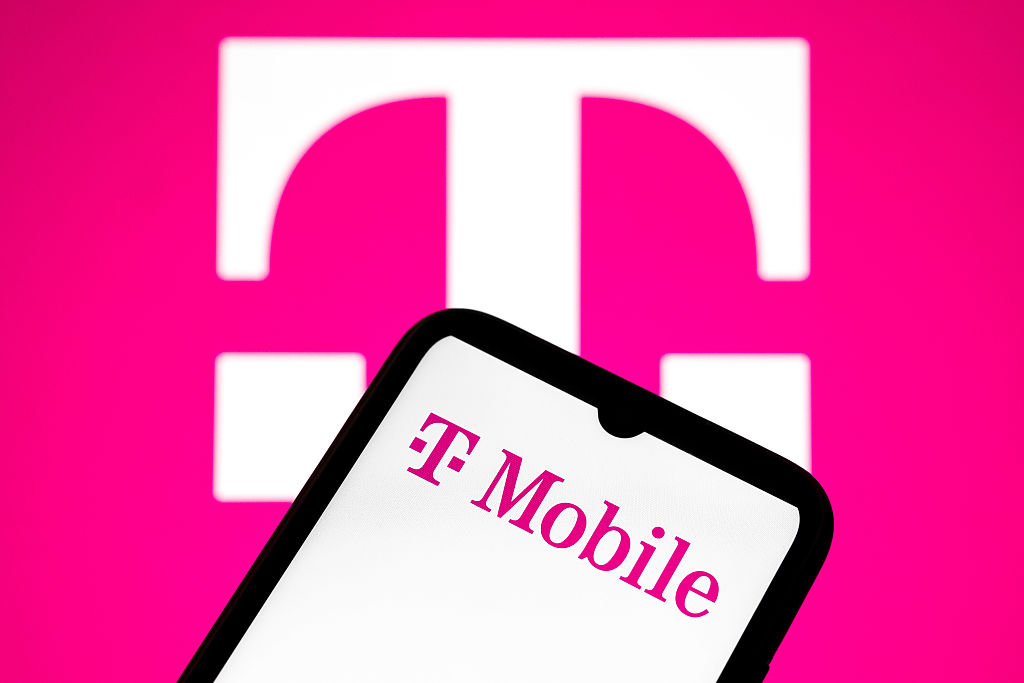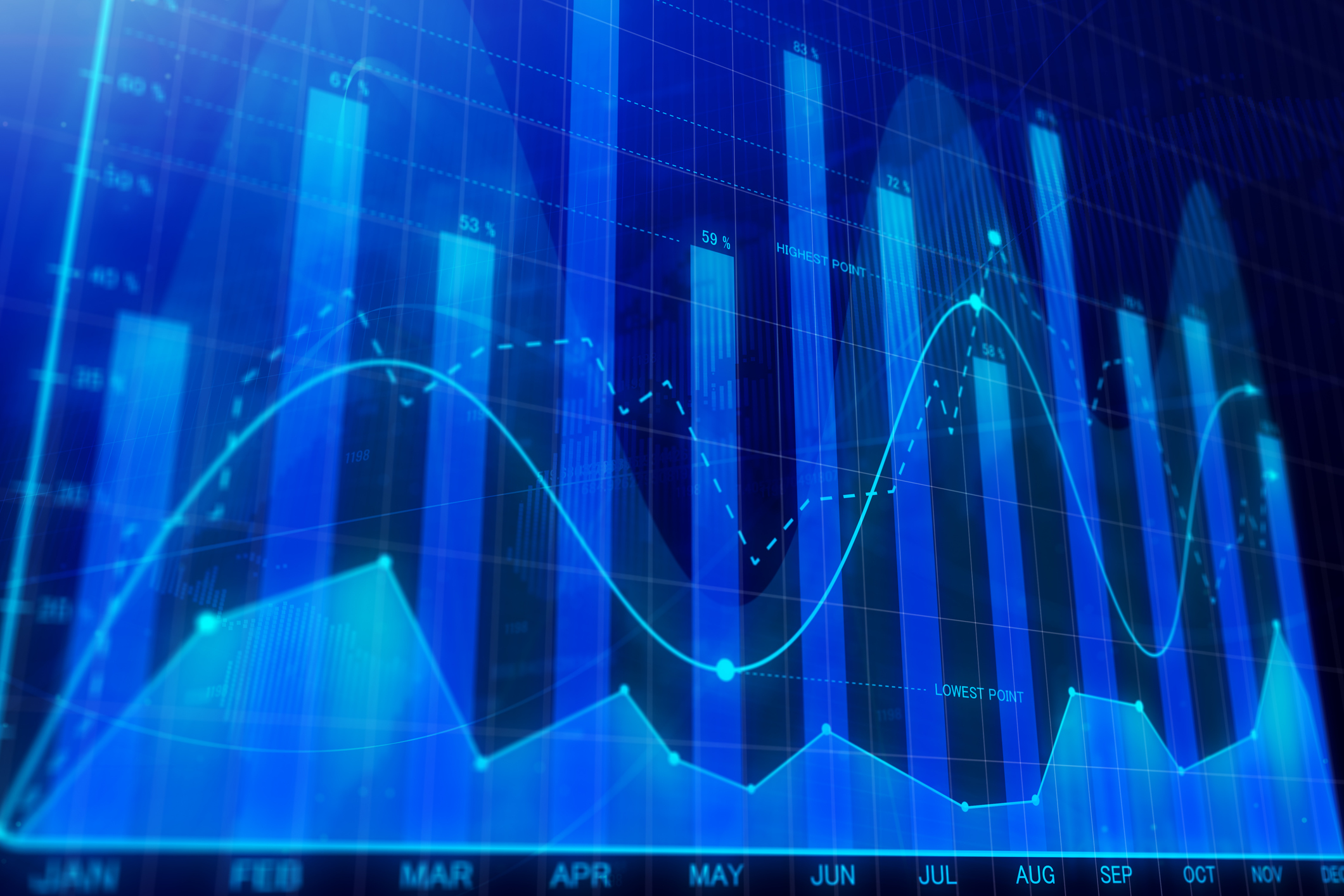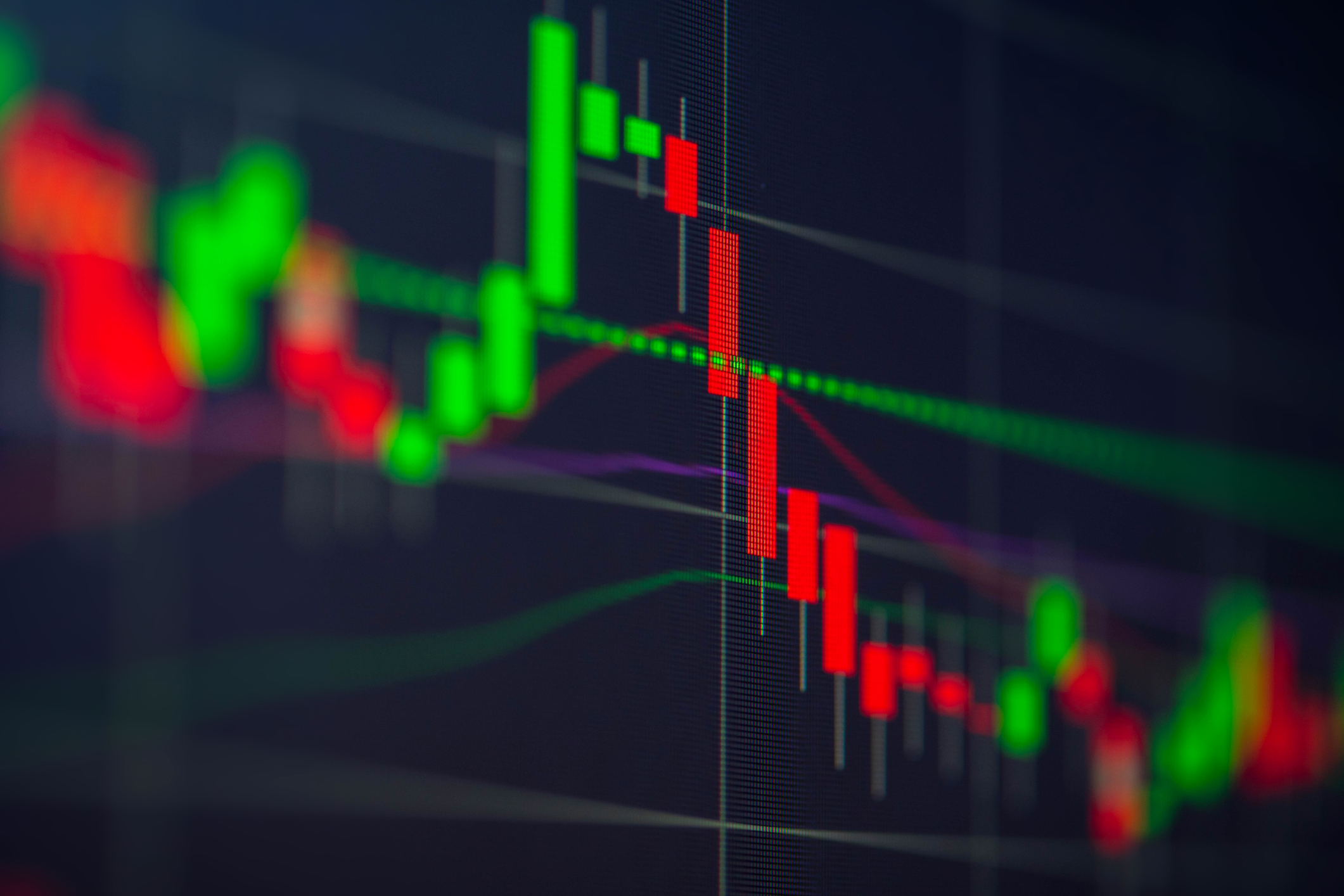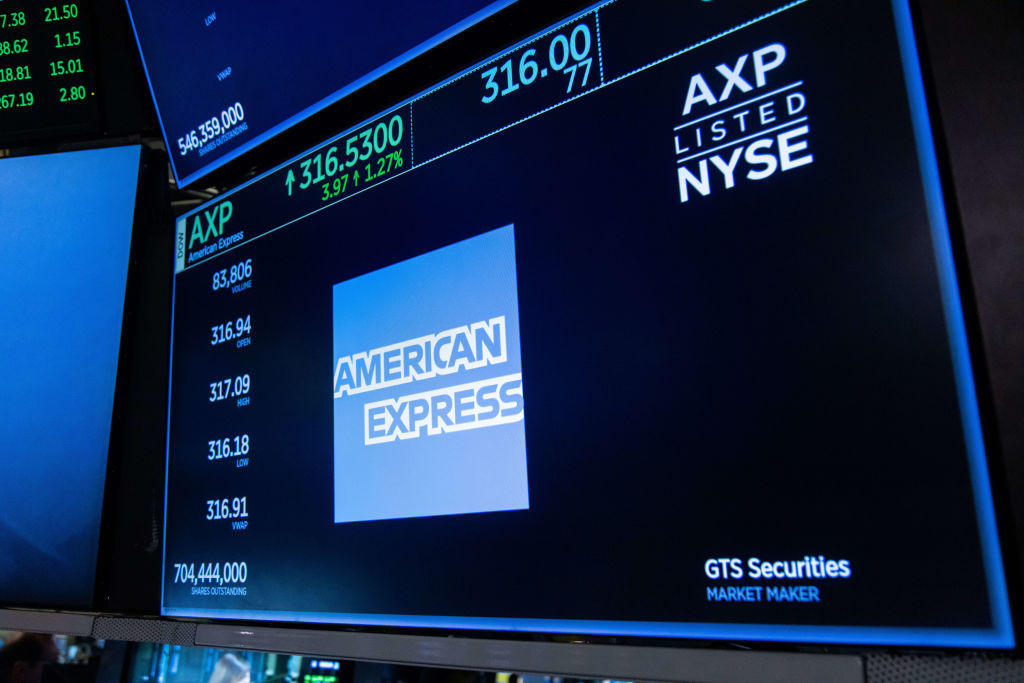Prosper With Do-Gooder Investments
Parnassus Investments founder and socially conscious investing pioneer Jerry Dodson talks value investing and some of his favorite stocks. Also: Which tax documents should you keep (or toss)?
Ryan Ermey: Does investing with a conscious mean sacrificing returns? Not if you're Jerry Dodson, whose Parnassus Endeavor Fund has outpaced the broad stock market, along with 98% of the peer mutual funds over the past decade. He joins us for a discussion on investing based on environmental, social and governance factors in our main segment. On today's show, Sandy tells you what to do with your old tax documents, and we unveil a transportation themed edition of Wild Pitches. That's all ahead on this episode of Your Money's Worth. Stick around.
- Episode Length: 00:29:54
- Links and resources mentioned in this episode
- SUBSCRIBE: Apple Google Play Spotify Overcast RSS
Ryan Ermey: Welcome to Your Money's Worth. I'm Kiplinger's Associate Editor, Ryan Ermey, joined by Senior Editor, Sandy Block. Sandy, we've made it to our 25th episode. I don't know what anniversary that is-
Sandy Block: No.
From just $107.88 $24.99 for Kiplinger Personal Finance
Become a smarter, better informed investor. Subscribe from just $107.88 $24.99, plus get up to 4 Special Issues

Sign up for Kiplinger’s Free Newsletters
Profit and prosper with the best of expert advice on investing, taxes, retirement, personal finance and more - straight to your e-mail.
Profit and prosper with the best of expert advice - straight to your e-mail.
Ryan Ermey: The diamond anniversary.
Sandy Block: I don't know, but I'm sure there's a website that will tell us.
Ryan Ermey: I'm expecting [something] in the mail. Anyway, we have an opening segment today that is up your alley, and probably something that is affecting a lot of people, which is if you've paid your taxes, which we know that all of you did, you likely have a stack of papers lying around somewhere. I have some dating back a few years, which of course raises the question of what should I keep, and what can I finally throw out?
Sandy Block: Well, that's right. This question, whenever we write about this, we get a ton of mail from readers, and sometimes they challenge what we say.
Ryan Ermey: They're probably just mailing us a W-2.
Sandy Block: People are very confused about it. There's actually some disagreement on the law. But here's the bottom line, when you file your tax returns the IRS has three years to initiate an audit. At the very least, you should hold on to your tax return, and your W-2, and your supporting documents for three years in case the IRS challenges anything on your return. But, in a lot of cases, you might want to hold on to it for longer than that because there are exceptions to this rule.
Sandy Block: One is if you fail to report at least 25% of your income, the IRS has six years to initiate an audit. Now, if you have taxes withheld, and you don't have a lot of investments, and you don't own hotels, you probably reported most of your income and this isn't a problem. But, if you're self-employed, there is a possibility that there is a 1099 out there that you didn't report. Just the rate of audit is much higher for self-employed people, people who file a Schedule C anyway. Yes, if you're self-employed, hold on to your tax returns for at least six years.
Sandy Block: Now, there is no statute of limitations on fraud. If the IRS thinks you cheated on your tax return, it can audit you indefinitely. If you're cheating on your tax returns, you're probably not thinking about that, but I would say if you were particularly aggressive in claiming some deductions, you might want to just hold on to these records forever. There are also some records that you're going to want to hold onto for other reasons, other than the IRS possibly auditing you. There are some records that will be helpful for you filing your taxes down the road.
Sandy Block: One is, if you have investments in taxable accounts and you sell them, keep the documents for at least three years after the sale. You're going to want that information for the basis, for reporting any taxes on that. You might want to hold onto your W-2s for a long time, because in some cases you may be asked to document your income. For example, if you think Social Security didn't give you credit for all of the years that worked. If you own a home and you sell it, hold onto the sale documents and any records of home improvements you made for at least three years after the sale.
Sandy Block: Now, I should here that most people don't have to worry about paying taxes on the sale of their primary residence, because there's a very large capital gains exclusion. But you know what? If you live in San Francisco and you bought your house a long time ago, you might owe taxes on it. Maybe you've rented it out. There might be some reasons that you want that, so it's just a good practice to hold onto those purchase documents, and as I said, records of your home improvements which could cut your taxes if you owe them. Hold onto those for at least three years after you sell.
Sandy Block: Finally, a lot of tax professionals say you should hold onto your tax returns forever. That doesn't mean you need to hold on to every credit card receipt, everything. But, your tax returns really are a good document of where you were in a particular time in your life. You may need them to, for example, apply for a mortgage. My husband and I applied for a home equity line of credit a couple of years ago, and I was really stunned by how many documents they required of us. I mean, we were in pretty good shape. We have a nice house, but we still had to provide a lot of documents showing our income not just for that year, but for past years.
Sandy Block: I don't think you need to hold onto every single receipt that you've ever gotten, and now that many more people are claiming the standard deduction, probably they're going to have a lot fewer records to begin with because you don't have to keep track of those documents. The actual tax return is really not a bad thing to keep around. If nothing else, it kind of gives you a nice snapshot 10 years from now of where you were, and how you managed to live on that amount of money.
Ryan Ermey: So, a couple of themes I'm sort of hearing emerge: One, is that if you had some sort of big cash influx, that's something that you're going to want to save. The other thing that I would wonder about is when it comes to my tax returns, my W-2s, my documents, I tend to have them stored digitally. I mean-
Sandy Block: Which is fine. Yes, the IRS accepts... That's a really good point, Ryan, because that's certainly a good way to keep track of things without having an overflowing file cabinet that some thief could get into and steal your identity. Yes, the IRS does accept digital copies so you can scan all of this information, store it someplace safe. As long as it's legible, the IRS will accept it.
Ryan Ermey: Yeah, well not only that, but that's how I file my taxes these days. I take my W-2 from work, and I take a picture of it, and it uploads to HR Block. That's the document that I actually submit.
Sandy Block: You never had paper to begin with, and I'm sure that's going to be more and more common going forward. That's just fine. Again, as long as it's in a safe place, that you can get to it, and it's not in a porous cloud or something like that, you're good.
Ryan Ermey: I hate those porous clouds.
Sandy Block: You're all good.
Ryan Ermey: All right, no porous clouds.
Ryan Ermey: Up next, Jerry Dodson talks ESG trends, value investing, and even picks a few stocks. Don't go anywhere.
Ryan Ermey: All right, we are back and we are here with Parnassus Investments' Chairman and Portfolio Manager Jerry Dodson. We're talking today about ESG investing. Jerry, you founded Parnassus Investments, and you're really considered a sort of pioneer in socially conscious investing. How would you say that space has evolved over the past say couple decades?
Jerry Dodson: It's been very surprising to me, because it's evolved into a mainstream phenomenon. There were very few people that practiced SRI, Socially Responsible Investing, in those days. I'm talking about the ‘80s, early ‘80s. Today, there are literally hundreds of funds that take ESG into account, and it's become part of the mainstream. People accept this as a reasonable way to invest, which has been a very pleasant surprise for me.
Ryan Ermey: How does the current form of ESG... Now we're talking about environmental, social and governance issues. How does the current sort of ESG landscape compare to the traditional SRI funds that some of our listeners might be familiar with?
Jerry Dodson: In my opinion, it's primarily historical. They're both very similar. SRI, Socially Responsible Investing, have mostly aspects of ESG. E, of course is Environmental; S, is Social; and now the G, is relatively new: Governance factors. Because, SRI didn't take it into consideration as much as ESG does. That's one thing that's in there. Otherwise though, I think it's really historical, and they're pretty similar. It's almost like the Japanese words, Zaibatsu and Keiretsu.
Jerry Dodson: The word Zaibatsu is for the Japanese business conglomerate, and then it's now called Keiretsu. So, it's pretty much the same thing, it's just historically evolved. SRI and ESG are the same.
Sandy Block: When I remember writing about SRI 15 years ago, the thinking then was that there was a tradeoff. It made you feel better, but oftentimes the fees were higher and the investment returns weren't as good as just investing in say an S&P 500 Index Fund. Some people said your best bet is just to get the best returns you can, and then give to charity instead of trying to do both. What has changed? And, is that tradeoff no longer the case?
Jerry Dodson: Some people argue to using that tradeoff. For me, I think that it's a better idea to look at it as an investment if you can't get good returns on it. I think that probably maybe you could consider the alternative, which is investing in an Index Fund, and donating the rest of them. We think a little differently about that, because the Parnassus returns have beaten the market. You probably know that 75% of mutual funds don't beat the S&P 500, or the longer time periods.
Jerry Dodson: Parnassus is unusual in they were one of the group that has been able to do this. For example, the fund I manage, which is called the Parnassus Endeavor Fund, has beaten the S&P 500 by about three percentage points per year over time. It varies, of course, depending upon what period you picked. But, over long periods of the last decade or so, it's about three percentage points. We think it's important that we're able to beat the averages. We think that it's possible to do that with ESG.
Jerry Dodson: I think there're certain advantages that an ESG fund has over a non-ESG fund. For example, if you invest in companies that treat their workers well, you're going to have less turnover, you're going to have more motivated workers. There's a lot of advantages to doing that. The same thing as with environmental factors. If you take environmental factors into account, it should mean that the company is less likely to be fined, it's less likely to be sued. Those are the two most important things, is treatment of workers and environmental aspects.
Jerry Dodson: There's also other things that are very important too, but in general I think that ESG investing should give you an advantage if you carry it out properly.
Ryan Ermey: Yeah, it almost sounds to me like the approach is that companies that have outstanding sort of ESG qualities tend to sort of also possess the hallmarks of well-run firms.
Jerry Dodson: I agree with that. Yeah, that's... I agree 100%. I think that's the key issue.
Ryan Ermey: How do you, at the Endeavor Fund, go about finding the firms that are the best actors in these arenas? Is this something that the individual investor can do if they're assessing stocks, or their considering buying, or stocks maybe that they already own within their portfolio?
Jerry Dodson: It's pretty difficult for an individual investor to do that. It's not immediately obvious. I've been doing this for 35 years, so I have a lot of experience. In general, I know which companies meet the criteria, which companies perform well, and which don't. So, that gives me an enormous advantage. But, if I were to start this... Let's say I were not involved in this aspect, not involved in business sales, say I was a musician playing for a band and I tried to this type of research, it's really difficult. There are some sources, but for the average person it's difficult. I would recommend they invest in a fund, and hopefully will invest in the Parnassus Endeavor Fund.
Ryan Ermey: Well, your fund has a value slant as well, right?
Jerry Dodson: Yes, some people have asked, "Why can the Parnassus Endeavor Fund out-perform on such a consistent basis over the market or over the other mutual funds?" Some of it is ESG for the reasons I indicate: The treatment of workers, the environmental factors. But, there's an even more important reason why we out-perform. It doesn't have anything to do with ESG, it just means buying stock throughout a favor. That's when a key skill comes in. If a stock goes down, it usually doesn't go down of its own weight. It goes down because something bad has happened: The competition comes in; If a product that's difficult that's marked an acceptance. There're just dozens of reasons why a stock can go down.
Jerry Dodson: The key skill is to determine whether whatever caused it to go down is permanent or temporary. If it's permanent, you don't want to invest in it. If it's temporary and you think they'll bounce back, then you make the investment. That's the key decision that you have to face. Once you've looked at that, it's hard to do that. After a stock goes down, people are really very nervous about investing in that company. But, that's the best time to do it, when the stock goes down to low levels.
Jerry Dodson: We have the ability to analyze why a stock went down, decide if it's permanent or temporary, and decide what are the prospects for that stock and the company making a comeback. Most people can't do that, more for emotional reasons than intellectual reasons. Even myself, after having done this for 35 years, it's hard for me to do that because after a stock goes down, say "Well, something's the matter here." So, it takes a lot of nerve to invest after it goes down, but that's really the secret of why Parnassus Endeavor Fund's been able to out-perform all these years.
Ryan Ermey: Well listen, I know our readers are interested in this kind of investing in both ESG investing and value investing. I'm certain after this, they'll be interested in the Endeavor Fund. Before I let you go, I mean, I would be remiss to not ask a legendary stock picker, are there any stocks in your portfolio right now that you are particularly excited about?
Jerry Dodson: In preparing for this interview, I did write up three companies that I thought were interesting, that are currently in our portfolio, all three of them. They have both good business characteristics, as well as good ESG characteristics. The three that I picked out are American Express (AXP), Applied Materials (AMAT), and Cummins Engine (CMI).
Sandy Block: You've got a really interesting selection, because I don't think those would jump to people's mind, particularly with respect to the E. Maybe talk about Cummins Engine, why that's on your list.
Jerry Dodson: That's a very good question. Cummins Engine, of course, makes diesel engines. As we know, diesel engines are not environmentally friendly.
Sandy Block: No, they are not.
Jerry Dodson: All right, so why is a firm like Parnassus investing in Cummins Engine? You have to take a given into really moving goods around the country. You need to have some means of transportation, and that's really almost … railroads or trucks. That's really your main choices. Railroads can only go in a certain number of places. Sorry, so why do I like Cummins Engines?
Jerry Dodson: First of all, it's very rigorous practices and goals to address some of the operational aspects. They've helped with energy consumption. Their engines have less greenhouse gas emissions. Also, in their manufacturing process they use waste and recycling. Then, they report their annual … through GRE, which is at the scope, an ultra-project called The Carbon Disclosure Project. It takes surveys, and they collect data through third parties.
Jerry Dodson: Even those diesel engines are not really positive for the environment, if you can get them to pollute less, that is definitely a positive. Cummins also has a global diversity and inclusion team, and they try to give opportunities for women and for minorities. Also, and this is very interesting, they're going to spend $500 million in the next three years on a new electrification project. They're going to try to start producing electric engines. Of course, this would change the outlook very much. So, if you wouldn't have a diesel engine.
Jerry Dodson: It'll take time to do that, but they have the first all-electric power train for the urban bus market in 2019. From this standpoint, think of it as a positive. Those are some of the reasons why I like Cummins Engine, even though it might not come to mind when you think of an environmental, responsible company.
Ryan Ermey: All right, well fantastic. Jerry, thank you so much for coming on. Like I said, we'll put a link to the mutual funds and all of the data that people can get on it in the show notes. Once again, thank you so much for coming on.
Jerry Dodson: I enjoyed being with you.
Ryan Ermey: After the break, should you buy a classic car, or an electric scooter? Well, maybe neither. Find out why next.
Ryan Ermey: All right, and before we go, more tales of PR pitches that were just a bit outside. This time, we have a transportation-themed issue of wild pitches for you. Sandy, what do you have?
Sandy Block: Okay, mine is not so much wild as misguided, because this really... You just wonder sometimes if these guys just scrape the Internet for emails and blast them out, because it's like what has this got to do with what I write about? This one, the title is called The Estate of a Gentleman, who should fetch an excess of $4 million, and I think that's $4 million pounds because this is from England. Which, explains why a lot of the terminology I don't really understand.
Sandy Block: It's basically about a car auction, a classic car auction. It's got all these details about these very special cars that were owned by this very special Lord, Sir John Egan, who loaned one of them to the TV program, Top Gear-
Ryan Ermey: Oh, Top Gear's a big deal.
Sandy Block: Yeah, Top Gear's a big deal. These are some big names. There's a ton of cars. We tell our readers to save at least 10% of their income for retirement, so I'm not sure where these cars fit into their investment portfolios, but-
Ryan Ermey: You never know.
Sandy Block: My favorite about the 1972 Jensen Interceptor, which has 52,000 miles, has had six keepers, which I assume is owners. It makes it sound like a gorilla. Then it says it even retained the original 8-Track stereo system with over a dozen cassettes still housed in the center console.
Ryan Ermey: Oh yeah, baby.
Sandy Block: So, if you buy this car, you may also get-
Ryan Ermey: Duran Duran.
Sandy Block: I'm thinking Boz Skaggs' "Silk Degrees," Foreigner, Abba's Greatest Hits. They're all here. I have never seen an 8-Track stereo system mentioned as-
Ryan Ermey: As a plus.
Sandy Block: As a plus, that's right. I mean, I think my dad still has one in his car. But the takeaway here is that I did a little bit of research on this, and if you're going to invest in a classic car, really don't invest. That's something you buy because you enjoy.
Ryan Ermey: Right.
Sandy Block: The returns generally have not been that great. A big reason for that is that maintenance and upkeep, and insurance costs so much. If you buy a beautiful piece of art, you hang it on the wall, and maybe you might have to add a rider to your insurance policy, but that's really all you have to do it. If you buy a classic car, you have to maintain it. You've got to put it somewhere.
Ryan Ermey: That's right.
Sandy Block: You're not going to park it out on the street. You have to drive it enough to keep all the juices flowing, but not too much because low mileage, something that's key.
Ryan Ermey: Is key, plus you could hit something.
Sandy Block: And, if anything goes wrong, I found an example of if you have a classic Ferrari, and you have to have the engine pulled, it costs about $20,000-
Ryan Ermey: Absolutely.
Sandy Block: Which is more than I've ever spent on an entire car.
Ryan Ermey: Worth more than your Hyundai.
Sandy Block: If you've got a yen for classic cars, and you have the money, fine. But, I don't think this is going to make you rich.
Ryan Ermey: Well, what if you want to ditch your car altogether? That's the pitch that I got.
Sandy Block: And that certainly would save you money.
Ryan Ermey: That is the conceit behind my wild pitch, and it's actually not dissimilar from advice that we've given for a long time that you can cut an enormous amount of money of your commute if you don't drive it. So, we have a calculator on our website that will calculate how much you can save on your commute by biking. You enter in how many miles your commute is, whether you have to pay any tolls, whether you have to pay for parking. Based on the cost of insuring a car, and paying for gas and all of this, it calculates the enormous savings. We'll link to that in the show notes.
Ryan Ermey: Now, I received a similar pitch about electric scooters. What I loved about this was it has it broken out by city, and Los Angeles is the winning city. Commuters in Los Angeles could save over $1,000 a year by riding electric scooters rather than cars. I don't know if you've been to LA.
Sandy Block: I was just there.
Ryan Ermey: But it is the land of a million highways, and I can't imagine taking your 15 mile per hour capped electric scooter up the PCH.
Sandy Block: No, I can't either because they're so tolerant there, too, of pedestrians and bicyclists, and anyone who's not going 80 miles an hour, right?
Ryan Ermey: The reason that this pitch is especially wild, is because it is out in conjunction with a new study from the city of Austin done the conjunction with the CDC about over the past three months over these shared electric scooters. So, I guess it doesn't apply to people who own their own electric scooter, but for the ones that are the scooter shares. Injuries, as you might have guessed, are quite frequent. 14 injuries per 100,000 rides, which is high, especially when you consider that the average trip on a scooter is less than a mile.
Sandy Block: Those are bad odds.
Ryan Ermey: Which also calls into question how far you're really commuting, and how much you're actually saving. The big shocking number for this study is that nearly half of the people who reported injuries had head injuries.
Sandy Block: Which is serious, and is going to cost a lot more than $1,000 that you're saving.
Ryan Ermey: Not only that, but 15% of those people were diagnosed with a traumatic brain injury.
Sandy Block: Oh my goodness.
Ryan Ermey: So, why is this? Well, people don't wear their helmets, is the big one. Not only that, but 70% of the people surveyed claimed to have received training, but 60% said that the form of training that they had received was swiping through the training on the app. The issue with riding your scooter to work is you shouldn't do it if you don't know how to do it safely. You shouldn't be taking your scooter up the shoulder of the highway, obviously. Scooters are also poorly equipped to handle things like potholes or problems with infrastructure. They have small wheels, they're not very maneuverable. A large percentage of the people who crashed their scooters in the study blamed potholes, or cracks in the sidewalk or whatever, which is of course like a poor workman who blames his tools.
Sandy Block: They're out there, those potholes.
Ryan Ermey: People know how to ride a bike, and people generally wear a helmet if they're smart. I'm not poo-pooing the idea of commuting to work on a scooter. They're absolutely rampant here in Washington, D.C.
Sandy Block: Oh my gosh, they're everywhere, yeah.
Ryan Ermey: And plenty of people love them.
Sandy Block: Dudes in suits.
Ryan Ermey: But, you will not in the long run, be saving money if you're being unsafe on a scooter. So, wear your helmet. I mean, my mom, when I was a kid riding my roller blades and stuff, I used to have wear wrist guards and elbow pads, and knee pads.
Sandy Block: And you're still here.
Ryan Ermey: And you look like a doofus. You might look like a doofus on your scooter.
Sandy Block: No, no, no. You're not going to look any sillier than these guys in suits and ties scooting up. You already look silly, you might as well be safe.
Ryan Ermey: Yeah, exactly. You're going to look sillier when you're in your suit telling someone for a survey that you crashed on a crack in the road and busted your head open. That's the thing, folks. Keep it safe. You don't have to wear the wrist guards, but learn how to ride your scooters, make sure they're a safe spot for your commute, and maybe not your 15 mile Los Angeles [commute]-
Sandy Block: Stay off the 405.
Ryan Ermey: Learn how to ride the things.
Ryan Ermey: That's it for this episode of Your Money's Worth. For show notes and more great Kiplinger content on the topics we discussed on today's show, visit kiplinger.com/links/podcasts. You can stay connected with us on Twitter, Facebook or by emailing us at podcast@kiplinger.com. If you like the show, please remember to rate, review and subscribe to Your Money's Worth wherever you get your podcasts. Thanks for listening.
Links and resources mentioned in this episode
Profit and prosper with the best of Kiplinger's advice on investing, taxes, retirement, personal finance and much more. Delivered daily. Enter your email in the box and click Sign Me Up.

Block joined Kiplinger in June 2012 from USA Today, where she was a reporter and personal finance columnist for more than 15 years. Prior to that, she worked for the Akron Beacon-Journal and Dow Jones Newswires. In 1993, she was a Knight-Bagehot fellow in economics and business journalism at the Columbia University Graduate School of Journalism. She has a BA in communications from Bethany College in Bethany, W.Va.
-
 The Retirement Donor's Checklist: Key Deadlines by Gift Type
The Retirement Donor's Checklist: Key Deadlines by Gift TypeRetirees have some charitable contribution options that can help avoid spikes in income from RMDS and capital gains.
-
 Cooler Inflation Supports a Relief Rally: Stock Market Today
Cooler Inflation Supports a Relief Rally: Stock Market TodayInvestors, traders and speculators welcome much-better-than-hoped-for core CPI data on top of optimism-renewing AI earnings.
-
 Are T-Mobile's Prepaid Perks a Home Run or a Strikeout?
Are T-Mobile's Prepaid Perks a Home Run or a Strikeout?T-Mobile's prepaid lineup promises MLB.TV, T-Mobile Tuesdays and hotspot data. But do the perks make it worth switching?
-
 Dow Rises 497 Points on December Rate Cut: Stock Market Today
Dow Rises 497 Points on December Rate Cut: Stock Market TodayThe basic questions for market participants and policymakers remain the same after a widely expected Fed rate cut.
-
 Stocks Rise to End a Volatile Week: Stock Market Today
Stocks Rise to End a Volatile Week: Stock Market TodayThe market's fear index reached and retreated from a six-month intraday peak on Friday as stocks closed the week well.
-
 Stock Market Today: Stocks Rise on Less Deadly Concerns
Stock Market Today: Stocks Rise on Less Deadly ConcernsMarkets are forward-looking mechanisms, and it's good when price action shows there's a future to look forward to.
-
 5 of Warren Buffett's Best Investments
5 of Warren Buffett's Best InvestmentsWarren Buffett has had plenty of wins throughout his decades of investing. Here, we highlight five of Buffett's best investments.
-
 What Does Medicare Not Cover? Eight Things You Should Know
What Does Medicare Not Cover? Eight Things You Should KnowMedicare Part A and Part B leave gaps in your healthcare coverage. But Medicare Advantage has problems, too.
-
 What American Express' Latest Dividend Hike Means for Investors
What American Express' Latest Dividend Hike Means for InvestorsIn addition to an earnings beat, American Express disclosed a 17% increase to its quarterly dividend. Here's what that means for the Dow Jones stock.
-
 15 Reasons You'll Regret an RV in Retirement
15 Reasons You'll Regret an RV in RetirementMaking Your Money Last Here's why you might regret an RV in retirement. RV-savvy retirees talk about the downsides of spending retirement in a motorhome, travel trailer, fifth wheel, or other recreational vehicle.
-
 Stock Market Today: Stocks End a Strong Year With a Whimper
Stock Market Today: Stocks End a Strong Year With a WhimperThe S&P 500 notched its first back-to-back 20%+ annual returns since the late 1990s.

